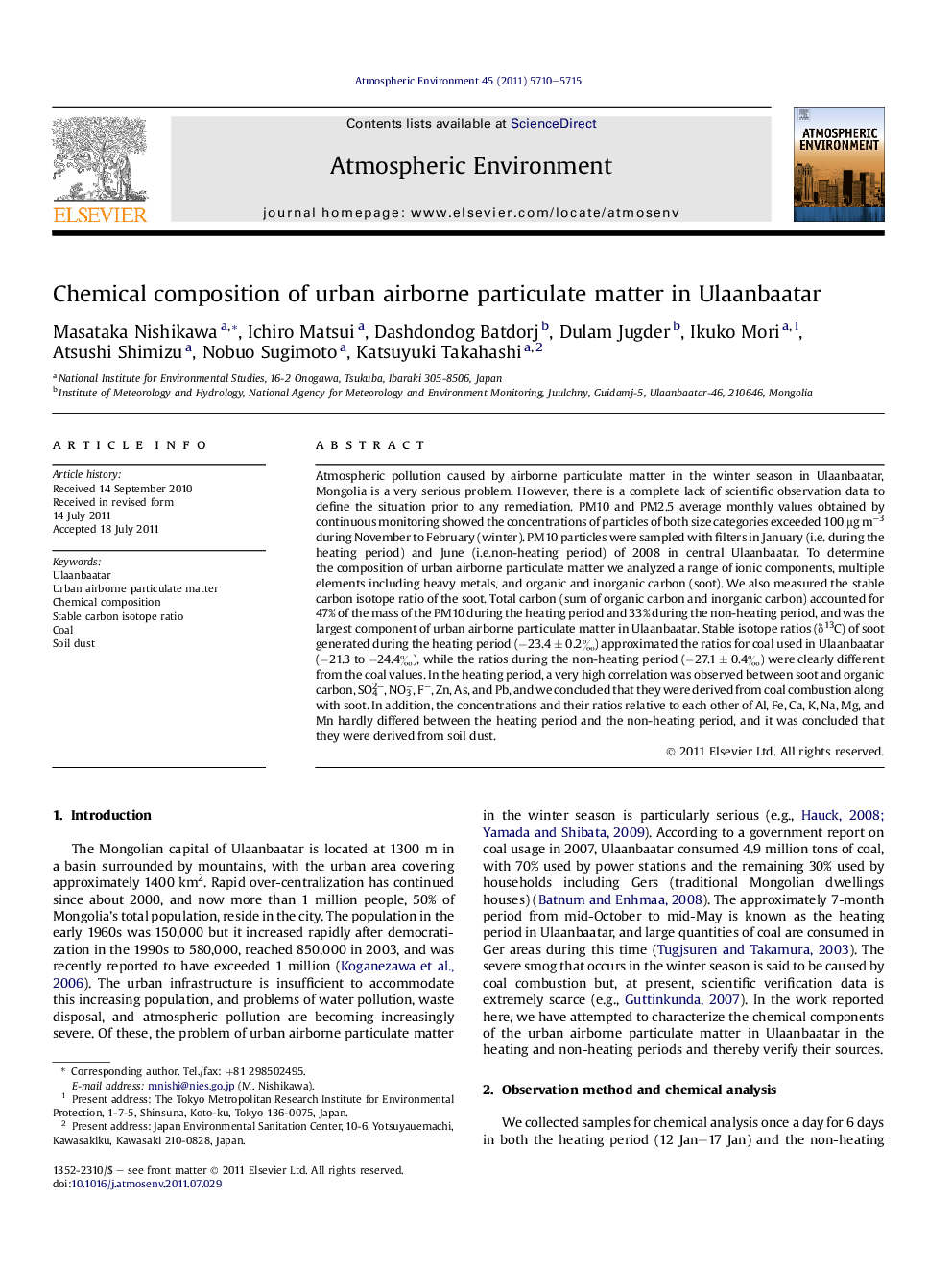| Article ID | Journal | Published Year | Pages | File Type |
|---|---|---|---|---|
| 6342699 | Atmospheric Environment | 2011 | 6 Pages |
Atmospheric pollution caused by airborne particulate matter in the winter season in Ulaanbaatar, Mongolia is a very serious problem. However, there is a complete lack of scientific observation data to define the situation prior to any remediation. PM10 and PM2.5 average monthly values obtained by continuous monitoring showed the concentrations of particles of both size categories exceeded 100 μg mâ3 during November to February (winter). PM10 particles were sampled with filters in January (i.e. during the heating period) and June (i.e.non-heating period) of 2008 in central Ulaanbaatar. To determine the composition of urban airborne particulate matter we analyzed a range of ionic components, multiple elements including heavy metals, and organic and inorganic carbon (soot). We also measured the stable carbon isotope ratio of the soot. Total carbon (sum of organic carbon and inorganic carbon) accounted for 47% of the mass of the PM10 during the heating period and 33% during the non-heating period, and was the largest component of urban airborne particulate matter in Ulaanbaatar. Stable isotope ratios (δ13C) of soot generated during the heating period (â23.4 ± 0.2â°) approximated the ratios for coal used in Ulaanbaatar (â21.3 to â24.4â°), while the ratios during the non-heating period (â27.1 ± 0.4â°) were clearly different from the coal values. In the heating period, a very high correlation was observed between soot and organic carbon, SO42-, NO3â, Fâ, Zn, As, and Pb, and we concluded that they were derived from coal combustion along with soot. In addition, the concentrations and their ratios relative to each other of Al, Fe, Ca, K, Na, Mg, and Mn hardly differed between the heating period and the non-heating period, and it was concluded that they were derived from soil dust.
Graphical abstractDownload high-res image (137KB)Download full-size imageHighlights⺠PM10 and PM2.5 monthly concentrations in Ulaanbaatar exceed 0.1 mg mâ3 in the winter. ⺠Total carbon (organic (OC) + inorganic (EC)) was largest component of PM. ⺠A very high correlation between EC, OC and others in PM was observed. ⺠The stable carbon isotope ratios of EC approximated the ratios for Mongolian coal.
